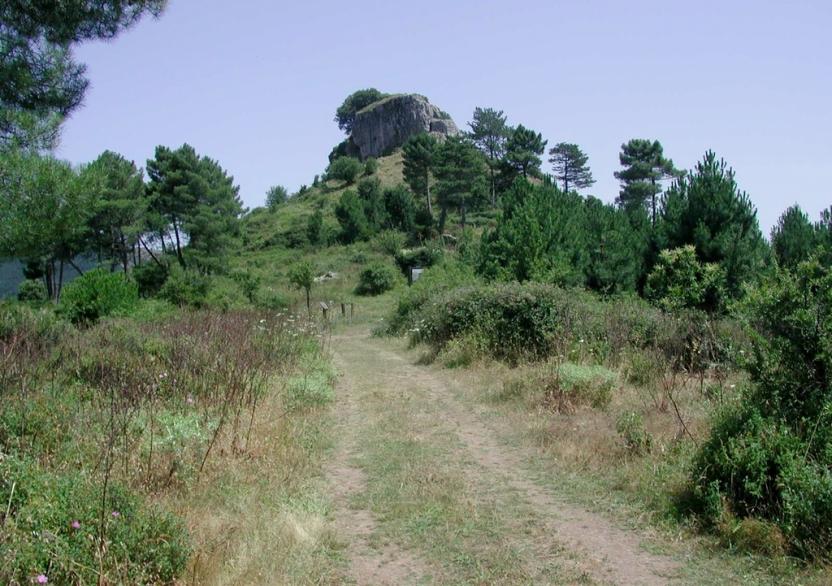Gavoi, Gusana. The lake between the mountains
Access
From the inhabited centre of Gavoi, take the SS 128 towards Ovodda, downhill, until you reach the signs for the Sa Valasa Hotel-Restaurant on the right. You are now on the shores of the beautiful Lake Gusana, the vast reservoir created for energy production and surrounded by dense woods. On the left-hand side of the road, just beyond the turn off for the Hotel where you can leave your car, you come to an uphill dirt road.
S’Iscrithola
Take the dirt track that gains height for a few dozen metres, then continue on the flat illuminated ridge covered with Mediterranean scrub. The road is extraordinarily panoramic and it is possible to admire a large portion of the lake, with the characteristic contrasts between the colours of the water and the surrounding woods that confers its beauty. The dirt road proceeds bending slightly to the left and gradually plunges into a forest of cork trees and evolved Mediterranean scrub, coming to a fork where you continue straight ahead. Some tens of meters apart, slightly downhill, are some granite boulders that you will encounter: you are in the locality of Iscrithola and here you find a domus de Janas necropolis with five tombs, excavated directly into the boulders, while a large cavern in a larger boulder shows a paved floor and signs of long anthropogenic presence
Il lago
Continue for a short distance, ignoring some minor detours to the left and then taking a right at an obvious fork. You are now almost back at lake and proceed in a south-easterly direction, still keeping to the main road. After passing a small building, you return to the SS 128 via a gate that must be closed again. Here you could return to Sa Valasa, however you can continue to the left, over the bridge, after which you go down, along an recognisable dirt road in the direction of the lake, on the right. Here begins a splendid path that runs alongside the lake, always shaded by the forest, following the gentle contours of the banks and with a few slopes. Occasionally, you will come across a few areas equipped for resting with wooden benches and tables. The last section of the route bypasses the Hotel Taloro accommodation facility, beyond which a short dirt road leads back to the SS 128, through which it is possible to easily return to Sa Valasa and Gavoi. For those who wish to extend the excursion, it is possible, from the Hotel Taloro, to cross the road and make a large loop along the Riu Perdas Fittas, in the Aratu valley, where a series of dirt roads lead to the river and some menhirs still standing vertically.
- Log in to post comments


